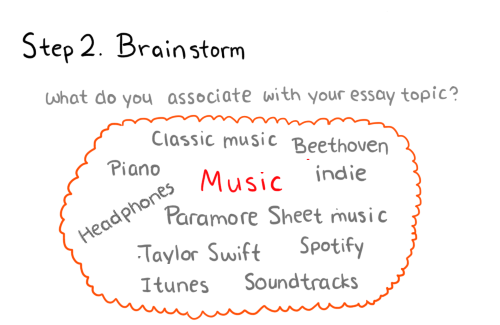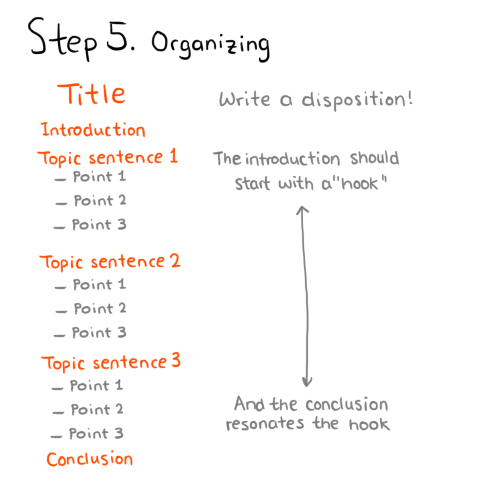I Need This! Indeed 😍
I need this! Indeed 😍







Ten steps to writing an essay //Science Scribbles
More Posts from Nofiafitri and Others

This is Mallika, my 8monts old baby girl...
say Hallo to the world Anim... :)


Do yourself a favor. Learn to code. Here's how.
I’ve said this to my non-techie friends countless times. It’s no secret that being able to code makes you a better job applicant, and a better entrepreneur. Hell, one techie taught a homeless man to code and now that man is making his first mobile application.
Learning to code elevates your professional life, and makes you more knowledgeable about the massive changes taking place in the technology sector that are poised to have an immense influence on human life.
(note: yes I realize that 3/5 of those links were Google projects)
But most folks are intimidated by coding. And it does seem intimidating at first. But peel away the obscurity and the difficulty, and you start to learn that coding, at least at its basic level, is a very manageable, learnable skill.
There are a lot of resources out there to teach you. I’ve found a couple to be particularly successful. Here’s my list of resources for learning to code, sorted by difficulty:
Novice
Never written a line of code before? No worries. Just visit one of these fine resources and follow their high-level tutorials. You won’t get into the nitty-gritty, but don’t worry about it for now:
Dash - by General Assembly
CodeAcademy
w3 Tutorials (start at HTML on the left sidebar and work your way down)
Intermediate
Now that you’ve gone through a handful of basic tutorials, it’s time to learn the fundamentals of actual, real-life coding problems. I’ve found these resources to be solid:
Khan Academy
CodeAcademy - Ruby, Python, PHP
Difficult
If you’re here, you’re capable of building things. You know the primitives. You know the logic control statements. You’re ready to start making real stuff take shape. Here are some different types of resources to turn you from someone who knows how to code, into a full-fledged programmer.
Programming problems
Sometimes, the challenges in programming aren’t how to make a language do a task, but just how to do the task in general. Like how to find an item in a very large, sorted list, without checking each element. Here are some resources for those types of problems
Talentbuddy
TopCoder
Web Applications
If you learned Python, Django is an amazing platform for creating quick-and-easy web applications. I’d highly suggest the tutorial - it’s one of the best I’ve ever used, and you have a web app up and running in less than an hour.
Django Tutorial
I’ve never used Rails, but it’s a very popular and powerful framework for creating web applications using Ruby. I’d suggest going through their guide to start getting down-and-dirty with Rails development.
Rails Guide
If you know PHP, there’s an ocean of good stuff out there for you to learn how to make a full-fledged web application. Frameworks do a lot of work for you, and provide quick and easy guides to get up and running. I’d suggest the following:
Cake PHP Book
Symfony 2 - Get Started
Yii PHP - The Comprehensive Guide
Conclusion
If there’s one point I wanted to get across, it’s that it is easier than ever to learn to code. There are resources on every corner of the internet for potential programmers, and the benefits of learning even just the basics are monumental.
If you know of any additional, great resources that aren’t listed here, please feel free to tweet them to me @boomeyer.
Best of luck!
If you need some sources, please dont hesitate! ;)


Wonderful!




#1 Get Comfortable
Nothing distracts you more than uncomfortable clothes! So wear all the things you are feeling completely comfy in and put your hair of the way. Personally, I like to wear simple shirts and yoga pants or leggings, also I put my hair up in a bun. And: forget the bra, girl! You are just sitting in front of your desk, no one cares. You should also make sure that, especially in winter, your feet won’t get cold. So: some cozy socks are needed!
#2 Tidy Up
I just can’t concetrate when my room is a mess, so normally I’ll tidy my complete room before I start my study session. This will help you so you don’t get easily distracted when you study and you’ll have more space to spread your notes around.
#3 Set Up Your Study Space
You don’t want to interrupt your studying because you have to get something you need, do you? So make sure you have everything you need before you start. And don’t forget to stay hydrated! So always have a bottle of water by hand, it will increase your productivity and help you to stay concentrated!
French flag being projected all over the world and facebook makes a French flag DP filter. I wonder why FB never created a Palestinian flag filter where hundreds die each month? Or maybe a Syrian, Iraqi or Afghan flag? A Pakistani flag after 16th Dec APS attack? Its exactly this “Selective” Humanity and Imperialistic mindset which leads to hatred towards the west. I condemn Paris attack but i also condemn the hypocrisy of western imperial mindset. - Hamza Ali Abbasi
Solar System: 10 Ways Interns Are Exploring Space With Us
Simulating alien worlds, designing spacecraft with origami and using tiny fossils to understand the lives of ancient organisms are all in a day’s work for interns at NASA.
Here’s how interns are taking our missions and science farther.
1. Connecting Satellites in Space

Becca Foust looks as if she’s literally in space – or, at least, on a sci-fi movie set. She’s surrounded by black, except for the brilliant white comet model suspended behind her. Beneath the socks she donned just for this purpose, the black floor reflects the scene like perfectly still water across a lake as she describes what happens here: “We have five spacecraft simulators that ‘fly’ in a specially designed flat-floor facility,” she says. “The spacecraft simulators use air bearings to lift the robots off the floor, kind of like a reverse air hockey table. The top part of the spacecraft simulators can move up and down and rotate all around in a similar way to real satellites.” It’s here, in this test bed on the Caltech campus, that Foust is testing an algorithm she’s developing to autonomously assemble and disassemble satellites in space. “I like to call it space K’nex, like the toys. We’re using a bunch of component satellites and trying to figure out how to bring all of the pieces together and make them fit together in orbit,” she says. A NASA Space Technology Research Fellow, who splits her time between Caltech and NASA’s Jet Propulsion Laboratory (JPL), working with Soon-Jo Chung and Fred Hadaegh, respectively, Foust is currently earning her Ph.D. at the University of Illinois at Urbana-Champaign. She says of her fellowship, “I hope my research leads to smarter, more efficient satellite systems for in-space construction and assembly.”
2. Diving Deep on the Science of Alien Oceans

Three years ago, math and science were just subjects Kathy Vega taught her students as part of Teach for America. Vega, whose family emigrated from El Salvador, was the first in her family to go to college. She had always been interested in space and even dreamed about being an astronaut one day, but earned a degree in political science so she could get involved in issues affecting her community. But between teaching and encouraging her family to go into science, It was only a matter of time before she realized just how much she wanted to be in the STEM world herself. Now an intern at NASA JPL and in the middle of earning a second degree, this time in engineering physics, Vega is working on an experiment that will help scientists search for life beyond Earth.
“My project is setting up an experiment to simulate possible ocean compositions that would exist on other worlds,” says Vega. Jupiter’s moon Europa and Saturn’s moon Enceladus, for example, are key targets in the search for life beyond Earth because they show evidence of global oceans and geologic activity. Those factors could allow life to thrive. JPL is already building a spacecraft designed to orbit Europa and planning for another to land on the icy moon’s surface. “Eventually, [this experiment] will help us prepare for the development of landers to go to Europa, Enceladus and another one of Saturn’s moons, Titan, to collect seismic measurements that we can compare to our simulated ones,” says Vega. “I feel as though I’m laying the foundation for these missions.”
3. Unfolding Views on Planets Beyond Our Solar System

“Origami is going to space now? This is amazing!” Chris Esquer-Rosas had been folding – and unfolding – origami since the fourth grade, carefully measuring the intricate patterns and angles produced by the folds and then creating new forms from what he’d learned. “Origami involves a lot of math. A lot of people don’t realize that. But what actually goes into it is lots of geometric shapes and angles that you have to account for,” says Esquer-Rosas. Until three years ago, the computer engineering student at San Bernardino College had no idea that his origami hobby would turn into an internship opportunity at NASA JPL. That is, until his long-time friend, fellow origami artist and JPL intern Robert Salazar connected him with the Starshade project. Starshade has been proposed as a way to suppress starlight that would otherwise drown out the light from planets outside our solar system so we can characterize them and even find out if they’re likely to support life. Making that happen requires some heavy origami – unfurling a precisely-designed, sunflower-shaped structure the size of a baseball diamond from a package about half the size of a pitcher’s mound. It’s Esquer-Rosas’ project this summer to make sure Starshade’s “petals” unfurl without a hitch. Says Esquer-Rosas, “[The interns] are on the front lines of testing out the hardware and making sure everything works. I feel as though we’re contributing a lot to how this thing is eventually going to deploy in space.”
4. Making Leaps in Extreme Robotics

Wheeled rovers may be the norm on Mars, but Sawyer Elliott thinks a different kind of rolling robot could be the Red Planet explorer of the future. This is Elliott’s second year as a fellow at NASA JPL, researching the use of a cube-shaped robot for maneuvering around extreme environments, like rocky slopes on Mars or places with very little gravity, like asteroids. A graduate student in aerospace engineering at Cornell University, Elliott spent his last stint at JPL developing and testing the feasibility of such a rover. “I started off working solely on the rover and looking at can we make this work in a real-world environment with actual gravity,” says Elliott. “It turns out we could.” So this summer, he’s been improving the controls that get it rolling or even hopping on command. In the future, Elliott hopes to keep his research rolling along as a fellow at JPL or another NASA center. “I’m only getting more and more interested as I go, so I guess that’s a good sign,” he says.
5. Starting from the Ground Up

Before the countdown to launch or the assembling of parts or the gathering of mission scientists and engineers, there are people like Joshua Gaston who are helping turn what’s little more than an idea into something more. As an intern with NASA JPL’s project formulation team, Gaston is helping pave the way for a mission concept that aims to send dozens of tiny satellites, called CubeSats, beyond Earth’s gravity to other bodies in the solar system. “This is sort of like step one,” says Gaston. “We have this idea and we need to figure out how to make it happen.” Gaston’s role is to analyze whether various CubeSat models can be outfitted with the needed science instruments and still make weight. Mass is an important consideration in mission planning because it affects everything from the cost to the launch vehicle to the ability to launch at all. Gaston, an aerospace engineering student at Tuskegee University, says of his project, “It seems like a small role, but at the same time, it’s kind of big. If you don’t know where things are going to go on your spacecraft or you don’t know how the spacecraft is going to look, it’s hard to even get the proposal selected.”
6. Finding Life on the Rocks

By putting tiny samples of fossils barely visible to the human eye through a chemical process, a team of NASA JPL scientists is revealing details about organisms that left their mark on Earth billions of years ago. Now, they have set their sights on studying the first samples returned from Mars in the future. But searching for signatures of life in such a rare and limited resource means the team will have to get the most science they can out of the smallest sample possible. That’s where Amanda Allen, an intern working with the team in JPL’s Astrobiogeochemistry, or abcLab, comes in. “Using the current, state-of-the-art method, you need a sample that’s 10 times larger than we’re aiming for,” says Allen, an Earth science undergraduate at the University of California, San Diego, who is doing her fifth internship at JPL. “I’m trying to get a different method to work.” Allen, who was involved in theater and costume design before deciding to pursue Earth science, says her “superpower” has always been her ability to find things. “If there’s something cool to find on Mars related to astrobiology, I think I can help with that,” she says.
7. Taking Space Flight Farther

If everything goes as planned and a thruster like the one Camille V. Yoke is working on eventually helps send astronauts to Mars, she’ll probably be first in line to play the Mark Watney role. “I’m a fan of the Mark Watney style of life [in “The Martian”], where you’re stranded on a planet somewhere and the only thing between you and death is your own ability to work through problems and engineer things on a shoestring,” says Yoke. A physics major at the University of South Carolina, Yoke is interning with a team that’s developing a next-generation electric thruster designed to accelerate spacecraft more efficiently through the solar system. “Today there was a brief period in which I knew something that nobody else on the planet knew – for 20 minutes before I went and told my boss,” says Yoke. “You feel like you’re contributing when you know that you have discovered something new.”
8. Searching for Life Beyond Our Solar System

Without the option to travel thousands or even tens of light-years from Earth in a single lifetime, scientists hoping to discover signs of life on planets outside our solar system, called exoplanets, are instead creating their own right here on Earth. This is Tre’Shunda James’ second summer simulating alien worlds as an intern at NASA JPL. Using an algorithm developed by her mentor, Renyu Hu, James makes small changes to the atmospheric makeup of theoretical worlds and analyzes whether the combination creates a habitable environment. “This model is a theoretical basis that we can apply to many exoplanets that are discovered,” says James, a chemistry and physics major at Occidental College in Los Angeles. “In that way, it’s really pushing the field forward in terms of finding out if life could exist on these planets.” James, who recently became a first-time co-author on a scientific paper about the team’s findings, says she feels as though she’s contributing to furthering the search for life beyond Earth while also bringing diversity to her field. “I feel like just being here, exploring this field, is pushing the boundaries, and I’m excited about that.”
9. Spinning Up a Mars Helicopter

Chloeleen Mena’s role on the Mars Helicopter project may be small, but so is the helicopter designed to make the first flight on the Red Planet. Mena, an electrical engineering student at Embry-Riddle Aeronautical University, started her NASA JPL internship just days after NASA announced that the helicopter, which had been in development at JPL for nearly five years, would be going to the Red Planet aboard the Mars 2020 rover. This summer, Mena is helping test a part needed to deploy the helicopter from the rover once it lands on Mars, as well as writing procedures for future tests. “Even though my tasks are relatively small, it’s part of a bigger whole,” she says.
10. Preparing to See the Unseen on Jupiter’s Moon Europa

In the 2020s, we’re planning to send a spacecraft to the next frontier in the search for life beyond Earth: Jupiter’s moon Europa. Swathed in ice that’s intersected by deep reddish gashes, Europa has unveiled intriguing clues about what might lie beneath its surface – including a global ocean that could be hospitable to life. Knowing for sure hinges on a radar instrument that will fly aboard the Europa Clipper orbiter to peer below the ice with a sort of X-ray vision and scout locations to set down a potential future lander. To make sure everything works as planned, NASA JPL intern Zachary Luppen is creating software to test key components of the radar instrument. “Whatever we need to do to make sure it operates perfectly during the mission,” says Luppen. In addition to helping things run smoothly, the astronomy and physics major says he hopes to play a role in answering one of humanity’s biggest questions. “Contributing to the mission is great in itself,” says Luppen. “But also just trying to make as many people aware as possible that this science is going on, that it’s worth doing and worth finding out, especially if we were to eventually find life on Europa. That changes humanity forever!”
Read the full web version of this week’s ‘Solar System: 10 Things to Know” article HERE.
Make sure to follow us on Tumblr for your regular dose of space: http://nasa.tumblr.com.



Last night was fun and fantastic reading!
-
 annat4rnh liked this · 6 months ago
annat4rnh liked this · 6 months ago -
 littlesleepymushroom reblogged this · 7 months ago
littlesleepymushroom reblogged this · 7 months ago -
 bonkasaurus liked this · 1 year ago
bonkasaurus liked this · 1 year ago -
 myocusringti liked this · 1 year ago
myocusringti liked this · 1 year ago -
 schemtohuxmi liked this · 1 year ago
schemtohuxmi liked this · 1 year ago -
 slowlystudyingsociology reblogged this · 1 year ago
slowlystudyingsociology reblogged this · 1 year ago -
 littlemaidensworld liked this · 1 year ago
littlemaidensworld liked this · 1 year ago -
 tennyo-elf liked this · 2 years ago
tennyo-elf liked this · 2 years ago -
 shannon8486-blog liked this · 2 years ago
shannon8486-blog liked this · 2 years ago -
 ozstudies reblogged this · 2 years ago
ozstudies reblogged this · 2 years ago -
 lireb-librarian liked this · 2 years ago
lireb-librarian liked this · 2 years ago -
 bellammith liked this · 3 years ago
bellammith liked this · 3 years ago -
 wojo4hitz reblogged this · 3 years ago
wojo4hitz reblogged this · 3 years ago -
 wojo4hitz liked this · 3 years ago
wojo4hitz liked this · 3 years ago -
 noodle-of-sunshine liked this · 3 years ago
noodle-of-sunshine liked this · 3 years ago -
 halimahasanah liked this · 3 years ago
halimahasanah liked this · 3 years ago -
 jak-tynatozni liked this · 3 years ago
jak-tynatozni liked this · 3 years ago -
 twmblr liked this · 3 years ago
twmblr liked this · 3 years ago -
 twigstarpikachutroll22 liked this · 3 years ago
twigstarpikachutroll22 liked this · 3 years ago -
 seph-reblogs reblogged this · 3 years ago
seph-reblogs reblogged this · 3 years ago -
 nostromo130 liked this · 3 years ago
nostromo130 liked this · 3 years ago -
 citrusbian reblogged this · 3 years ago
citrusbian reblogged this · 3 years ago -
 citrusbian liked this · 3 years ago
citrusbian liked this · 3 years ago
Hi everyone.. I'm a Researcher who interesting on the political issues. I'm doing master on International Relations and Political Science at University of Indonesia. Please don't hesitate to contact me through this. I'm also the owner of Warung Data IT...
74 posts